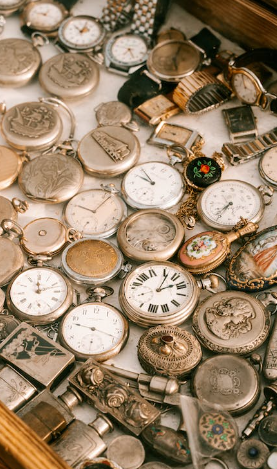By Contributor: Jonathan Hayes
If your grandfather’s truck from the 1950’s appeals more to you than your neighbor’s new computer-controlled car, then you my friend may be the perfect candidate for a mechanical watch.
We live in an age of digital, energy dependent, and connected devices and it’s easy to trade technology and convenience for sustainability and craftsmanship. I like the idea of buying something once and having it last a lifetime. If you find that you feel the same, I’d like to provide a few tips of what to look for when choosing your first mechanical watch.
Let’s first oversimplify matters and place watches into two categories: Quartz and Mechanical.
Quartz watches require a source of energy (a battery) to provide an electrical current to vibrate a quartz crystal. These vibrations are converted back into electrical pulses and serve as the “tick” of the watch to keep time. While this technology resulted in more accurate time keeping, it also introduced the concept of “disposable watches”. It quickly became easier to replace a watch rather than repair it.
On the other hand, mechanical watches rely on a spring to power the “tick” to keep time.
They require no battery. With a bit of routine maintenance, a mechanical watch will effectively run forever as long as the spring remains wound. It’s likely that with a small amount of TLC your grandfathers’ truck (and your mechanical watch) will be happily “ticking” down the road in fifty years whereas your neighbor’s new car and his quartz watch will be obsolete.
If you’re still with me, let’s highlight four things to keep in mind if you want to turn back the hands of time.
First, the speed of the beat matters. To be more specific, the frequency of a mechanical watch is measured in beats per hour (bph) and will determine how accurate and smooth the watch operates.The faster the beat, the smoother the operation.
Generally older pocket watches and vintage wristwatches beat at 18,000 bph whereas modern mechanical watches beat at 21,600 or 28,800 bph and above. Stay above 21,000 bph and you will have a smooth ride.
Second, the material used to make the crystal covering the face of the watch drives durability. Typical materials include acrylic plastic, mineral glass, or sapphire and synthetic diamond crystal.
 While acrylic and mineral options are more affordable, they scratch easier. If you are looking for the ultimate scratch resistant option, sapphire and synthetic crystal materials are your friends.
While acrylic and mineral options are more affordable, they scratch easier. If you are looking for the ultimate scratch resistant option, sapphire and synthetic crystal materials are your friends.
Third, a watch’s case material significantly influences the price and durability. Avoid brass or zinc alloys plated with nickel, aluminum, and chrome. Look for high quality materials such as stainless steel (316L), titanium, ceramic and gold. These are lifetime materials.
Fourth, watch complications drive cost and complexity. A basic watch shows the hour and minute of a day. Adding complications can mean adding a date function, a time zone function, or a function to track the phase of the moon.
If you add functions and stay at the same price point, you will have to trade off in other areas (case material, crystal material or bph). Watches with fewer complications are also easier and less expensive to repair.
In my humble opinion, you are already winning if you choose a mechanical watch over its technologically superior sibling. I love the idea that I can pass my mechanical watch down to the next generation. I also smile when I see an old truck driving down the road.
Lucky for us, we still have timeless treasures within our reach.








